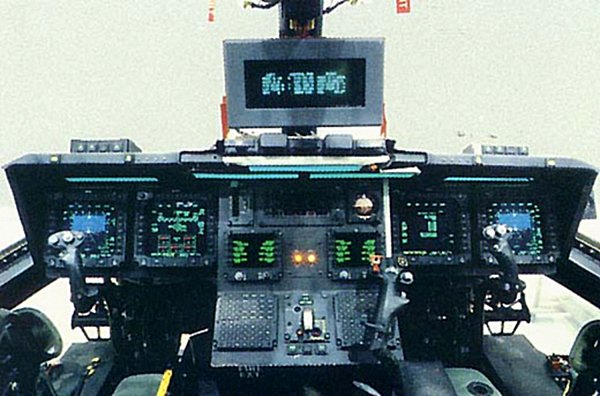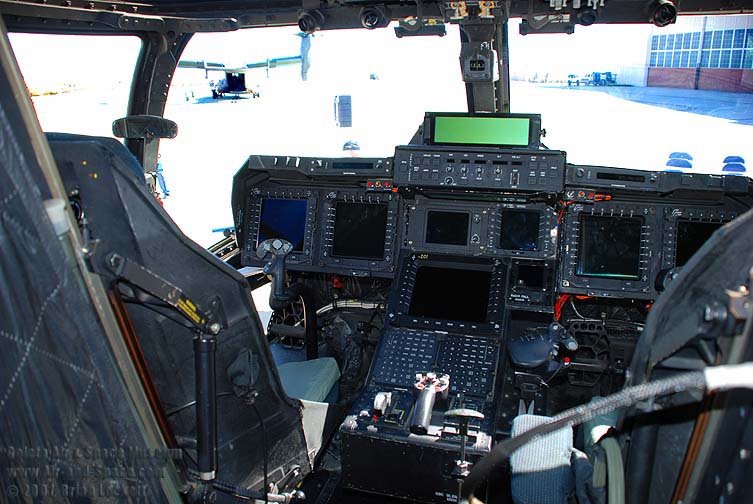V-22’s Iraq Performance Should Prompt Program Review, GAO Says
By Tony Capaccio
June 23 (Bloomberg) -- The V-22 Osprey’s performance during its 19 months in Iraq was substandard and the Pentagon should review whether the aircraft’s cost and reliability merit continuing the program, according to congressional auditors.
The tilt-rotor plane’s components wear out too soon, making it too costly to maintain and grounded too much of the time, the U.S. Government Accountability Office said.
The Defense Department has spent $28 billion on the aircraft developed and built by Textron Inc. and Boeing Co. and has bought 206 planes to date. It plans to spend $25 billion more on upgrades and the purchase of the remaining 252 planes in the 458-aircraft program for the Marine Corps and Air Force Special Operations Command.
Given the “significant funding needs” to complete the program, “now is a good time to consider the return on this investment as well as other, less costly alternatives that can fill the current requirement,” the watchdog agency said.
The report, scheduled for release at a congressional hearing today, is the first independent assessment of the V-22’s performance in Iraq. The aircraft has been in development for 20 years and Marine Corps officials say it is likely to be deployed in Afghanistan this year.
The Osprey has rotors that tilt, allowing it to take off and land like a helicopter. The military sees it as useful for long-range Marine Corps and commando missions such as those the Marines anticipate in Afghanistan.
Pentagon Response
David Ahern, a Pentagon acquisition official, defended the aircraft’s effectiveness in Iraq but said the GAO “properly identifies reliability and availability concerns.”
“Correcting the reliability and availability problems is a priority and actions are being taken,” Ahern stated in comments included in the report. “Neither the Defense Department nor the Marine Corps is satisfied,” he wrote in comments coordinated with the Marine Corps.
Ahern said the Pentagon sees no need for a reassessment of the program of the scope recommended by GAO, but “as more is learned about the V-22’s performance, future adjustments to planned quantities may be appropriate.”
Pentagon performance reviews of the Osprey in 2000 and 2001 criticized the aircraft for a host of deficiencies, including problems with its design, safety and reliability. Subsequent reviews concluded that the problems had been largely corrected.
No Heavy Combat
The V-22 didn’t face heavy combat conditions in Iraq. The first squadron of 12 arrived in October 2007, after the once- heavy fighting in Anbar province between U.S. forces and al- Qaeda insurgents had died down because local Sunni tribesmen had turned against the insurgents.
While the V-22 flew its assigned missions successfully, maintenance problems left the planes available for flight at rates “significantly below minimum required levels,” the GAO said.
During three periods studied during the V-22’s deployment from October 2007 through April 2009, the planes were available for combat operations on average 68 percent, 57 percent and 61 percent of the time, “while the minimum requirement” is 82 percent, said the GAO.
And these low rates “were not unique to the Iraq deployment” but were on par with other V-22 squadrons in the U.S., GAO said.
In addition, the 12 planes arrived with nearly three times the spare parts required, yet some parts wore out more quickly than expected, creating shortages that forced maintenance crews to cannibalize components from these planes or get them from Ospreys based in the U.S.
In addition to keeping the plane grounded, these constant repairs put the plane’s flying cost at $11,000 per hour, double the original estimate.
Design ‘Challenges’
The V-22’s continuing design “challenges have raised questions over whether the aircraft is best suited to accomplish” the full range of missions of the older aircraft it’s replacing, the agency said.
Ahern defended the V-22’s performance in Iraq.
“The aircraft was pressed into combat operations in Iraq at the first opportunity,” he wrote. “The V-22 is arguably the most survivable, versatile and capable medium-lift airframe in the Iraq theater” and “evidence in the report leads to a conclusion that the V-22 was operationally effective in Iraq,” Ahern wrote.
Providence, Rhode Island-based Textron’s Bell Helicopter unit co-produces the Osprey with Boeing’s Ridley Township, Pennsylvania, facility. Chicago-based Boeing makes the fuselage. Fort Worth, Texas-based Bell mates the wings and the tail to the fuselage and conducts flight tests.
Bell Helicopter spokesman Tom Dolney said that, while the companies haven’t seen the GAO report, “We have a plan in place and an ongoing program to improve the availability of the entire V-22 fleet.”
“We’ve been working with our customers and the Osprey industry team to identify components, support activities and designs that will improve aircraft availability. Several improvements are already in place,” Dolney said in an e-mail statement.





 По моему здесь также получится.
По моему здесь также получится.
